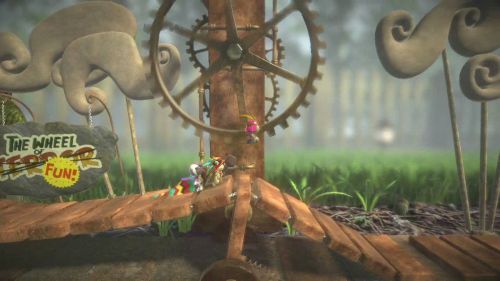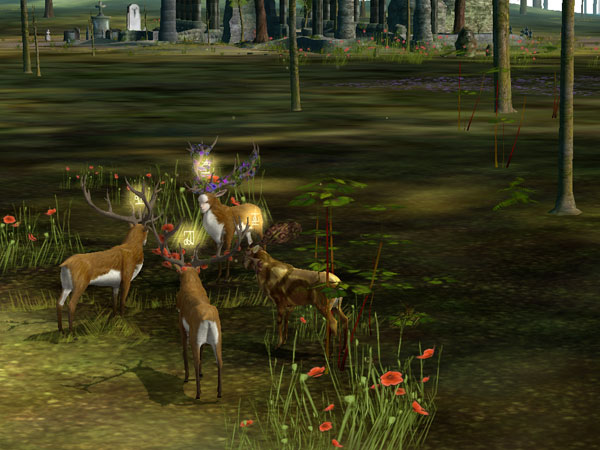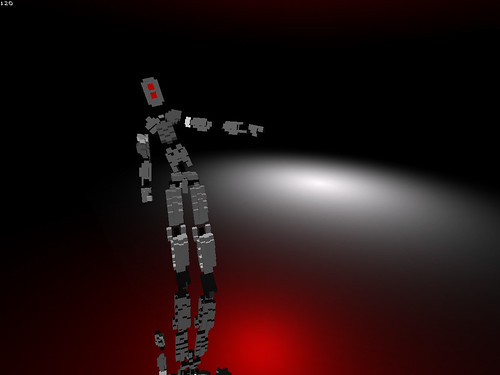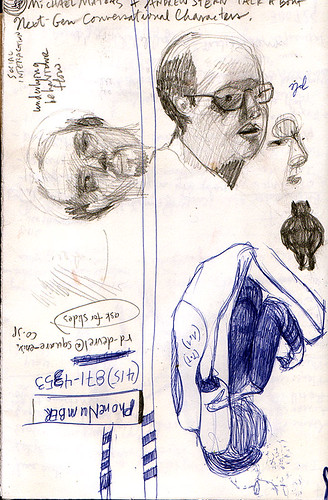User-generated or player-created content has been a buzz in the games industry for a while. I guess it started with hackers modding shooters which culminated in developers offering free tools to modify their games. This idea saw a more democratic incarnation in Second Life and The Sims, which were designed to offer players the ability to create content with and for the games. The Movies was an extreme version of this trend. And Spore seems to follow the same path of easy access to manipulating the content of the game, and that manipulation being part of the enjoyment of the game.
The increase in assets required for Next Generation titles and the success of Web 2.0 have rejuvenated the idea of player-created content.
We, at Tale of Tales, have always been a bit confused by this desire of game designers to allow players to mess with their work. We have even accused them of refusing to take up their responsibilities as authors. It’s easy to hide behind the cliché that in interactive media, the audience becomes the author. The truth of such a statement rarely goes deeper than the marketing blurb, though. Changing the texture of a virtual t-shirt or the number of legs on a little cartoon critter hardly counts as shared authorship in my book. And in terms of creativity, it’s nowhere near the modifications that have been made of Quake and Unreal.
There is, however, another way, for players to be creatively involved in a game. Where the gameplay itself is the creation of the player. Where playing equals creation and what is created is gameplay. This is, I believe, the culmination of the interactive dream. And it is already here, in games like Garry’s Mod, LittleBigPlanet and our very own The Endless Forest.
Garry’s Mod is a sandbox mod for the Source Engine. Unlike normal games there aren’t any predefined aims or goals. Players are given tools and are left to entertain themselves.
In Garry’s Mod, you get to mess around with all the assets of Half Life 2, Counter Strike and some other Valve/Source games. You pose the ragdolls and turn all sorts of combinations of objects into little machines. But the most interesting aspect, I find, is the ability to spawn the Half Life 2 characters, including their basic Artifial Intelligence. This allows you to create little scenes with characters that respond to your and each other’s presence. Given that the source assets came from a war-based game, the intelligence of the characters is limited to knowing who their enemies are. But still it is somewhat magical to see Alyx take her big bazooka and defend you against some zombie you just put there. You can actually die in this mod, so it’s important that she does defend you.
What I find remakable about Garry’s Mod, as opposed to say The Movies or The Sims, is that what you create as a player takes place in the gameworld and within the game’s narrative. You’re not making your own movies or (ab)using the game for your personal expression. What you do is defined by the capabilities of the assets. In other words, you can only really create war scenarios with it. And that is great, because even though we can be extremely creative as players, we remain immersed in the fantasy that was so carefully constructed by the authors.
Characters have the power to move anything in this glued and stitched-together landscape; they have the power to design, shape and build both objects and entire locations for others to play.
Little Big Planet is a Playstation 3 game currently being developed by the makers of Rag Doll Kung-Fu. From the videos that have been released of it, the game seems to involve creating platform-levels with objects that respond to realistic physics simulations. And then moving through them with friends.
So again, no custom decals to express your inner self, but a game that explores the joy of being creative. In a universe that has interesting properties and characters with attitudes, things that you can connect to mentally and physically. Not a blank slate. Very much an authored environment in terms of aesthetic style, interactive properties, general atmosphere and character design. But the actual gameplay is left to you, the player.
When your computer goes to sleep you appear as a deer in this magical place. There are no goals to achieve or rules to follow. Just run through the forest and see what happens.
I must admit that we did actually not set out to make a game for active player creativity back in September 2003 when we came up with the initial idea for The Endless Forest. For us, all that mattered was to create a believable environment filled with elements that inspired imagination, (passive) mental creativity. But since the game’s release in September 2005, we have been amazed by how creative the players have been in inventing games with the objects and actions that we have added to the game. This is especially interesting since most of the games that players have invented require multiple participants, and there is no chat in The Endless Forest.
Here’s a little list that was entirely created by the players themselves on the game’s webforums. For an idea of the building blocks for these games please see the Activities and Magic pages of the website. In short, there’s a bunch of animations that allow players to express emotions in body language and there’s magic that allows them to change another player’s appearance.
Follow the Leader
Copy someone else’s appearance. Gets better the more deers you have- see Tiny Twins of Terror.
The challenge of copying somebody else’s appearance is increased by the fact that you cannot change your own but need somebody else to cast a spell on you. And which spell gets cast is random.I Want…
Try to change a new friend to the pelt/antler/mask combo they actually want. Then, figure out what game they want to play next!Dance Attack
Gather as many deer as you can, begin to shake it down, and hope that the others get the idea.Turn Everyone White
Someone prays at the Twin Gods and then turns as many others as possible white too before it wears off. Pass it around, etc, and keep it going as long as possible (AKA, until everyone goes off to chase butterflies instead).Fly!
Find a tall area of land, and jump continuously while running off it. Best if you can pull it off so that you go over a group of others, or the pond if you’re feeling dangerous.
This is actually an exploit and never intended to be a feature. But we love it.Tiny Twins of Terror
Become small, find or make other(s) look like you, and create mischief by following a larger deer and/or doing the same thing at the same time.Leapfrog
Find a deer. Charge at them, full speed, and leap! It’s harder than it sounds to make it a perfect shot…Chase
Just run around in a herd, trying to meet up with other people.Stalk The God
If it’s Abiogenesis, STAMPEDE after the Twin Gods. Follow the little balls of light. Locate and dance with the big/golden deer. If it isn’t Abiogenesis, just try and spot Auriea (if you’ve figured out her pictogram) or Michael and go play with them.I Can Breakdance!
Fiddle around with the laughing emote. Somersault, go round in circles, everything. Do this with someone else; see who can pull off the crazier stunt.
Another exploit that allows players to blend character animations in ways we hadn’t anticipated.Hit trees
Charge through the forest and hit as many trees as possible.
When you hit a tree in The Endless Forest, you are not stopped and a pretty blue puff appears instead.
These are all very simple games, but they are extremely amusing nonetheless. And it’s a delight for us, designers, to see players making their own game. It feels a lot more rewarding for us when people create something new out of the things we made than it would to just have them understand the rules and do exactly what we expect them to do.
I believe when a game supports this kind of creativity, players get a lot more out of the story that you’re trying to tell. Because while players are inventing their own games, they are not breaking or abusing our design. Even when the deer start flying and they roll over (or even through) the floor in impossible ways, it still fits within the fantasy narrative that we have created.
Thanks to Endless Forest players Anduin, Stehuaa, Demayetay Taheris, Fincayra and Wildbluesun for compiling the list.





















